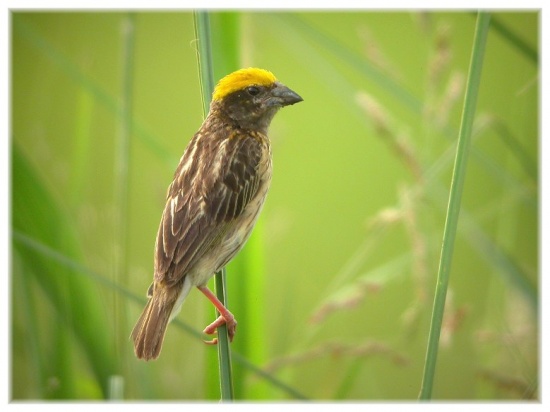m (genus tag, gallery search) |
|||
| Line 1: | Line 1: | ||
| − | + | {{incomplete}} | |
| − | |||
[[Image:Streaked_Weaver.jpg|thumb|550px|right|Photo by Chaiyan]] | [[Image:Streaked_Weaver.jpg|thumb|550px|right|Photo by Chaiyan]] | ||
| + | ;[[:Category:Ploceus|Ploceus]] manyar | ||
==Identification== | ==Identification== | ||
| Line 15: | Line 15: | ||
They nest in small colonies often in reed beds near water bodies. The nest is globe shaped, with a long entrance tunnel, and is woven from grass and plant fibres. | They nest in small colonies often in reed beds near water bodies. The nest is globe shaped, with a long entrance tunnel, and is woven from grass and plant fibres. | ||
==External Links== | ==External Links== | ||
| − | + | {{GSearch|Ploceus+manyar}} | |
| − | [[Category:Birds]][[ | + | [[Category:Birds]] [[Category:Ploceus]] |
Revision as of 11:04, 21 April 2009
| This article is incomplete. This article is missing one or more sections. You can help the BirdForum Opus by expanding it. |
- Ploceus manyar
Identification
Golden yellow crown with contrasting dark brown head and throat, heavy streaks on breast and dark brown upperparts with fulvous streaks, brownish-black, short, stout bill, short and slightly rounded tail, buffy underparts streaked with dark brown. Female - heavy brown streaks on buffy throat, breast and flanks, heavily streaked crown, dark-brown ear-coverts, yellowish supercilium, yellow patch on the side of the neck, white chin, upper throat and belly, pale flesh-coloured bill.
Distribution
South Asia.
Taxonomy
Habitat
Behaviour
They nest in small colonies often in reed beds near water bodies. The nest is globe shaped, with a long entrance tunnel, and is woven from grass and plant fibres.




